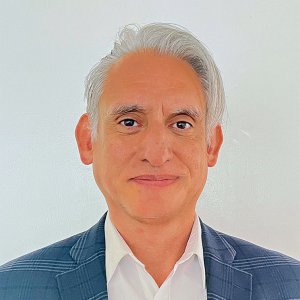Increasing Access to Health Through Comprehensive Approach

STORY INLINE POST
Q: What is Axios International's approach to increasing healthcare access?
A: Axios International was founded in 1997 with the vision of increasing access to treatment across emerging markets. Over the past 20 years and over, we have introduced innovative solutions that complement the existing healthcare system, working with local stakeholders and bringing global expertise so patients get the right medication at the right time without having to make significant sacrifices to afford treatment. That said, our focus is really on access to treatment by addressing, initially, the affordability barrier. Once the affordability barrier has been addressed, then we provide patients with tailor-made support so they can stay on treatment and get the best out of their medications.
Q: How do you complement local health systems?
A: Mexico has a good, yet fragmented, healthcare system. However, the cost of oncology medication is quite high and it takes time before these products are reimbursed by the public healthcare system. We have come up with a model that empowers the patient in the decision-making process. If patients have the capability to pay a part of their treatment out of pocket, then they contribute to it and the remainder is subsidized through our program, which is sponsored by pharmaceutical companies.
It is a cost-sharing model between the patient, the pharmaceutical company, NGOs and private insurers. All this is based on the patient’s ability to pay, which is assessed by Axios International using its own Patient Financial Eligibility Tool (PFET). It is important to understand the patient’s individual ability to pay so we can provide fair and sustainable access.
Q: What initiatives does Axios International have in Mexico for vulnerable groups?
A: At the moment, we have five programs in Mexico. They are mainly focused on oncology — breast, colon, ovarian and hematological cancers. We also have quite a large project around Hodgkin's lymphoma, where patients are able to pay based on their capabilities and receive the remainder of the treatments through our program. This has been highly impactful as we have seen patients continuing with their treatments longer, achieving a life-long benefit.
Q: What are the best strategies to influence the decisions patients make regarding treatment?
A: Empowerment is key. All the physicians we work with are very busy, even more so in the midst of the pandemic, spending time with patients and providing information. However, when patients come to our programs, there is still a need for further education. We provide this through our local counselors and via our digital platform, Axios+ , which targets both patients and physicians, as well as pharmacists, who are also important stakeholders. This platform can be used not only for patients to follow up on their treatment but also for the physician to see at what point the patient is in the program.
Q: Why is it important to have a multidimensional approach when providing greater access to health?
A: We understand all the challenges that patients go through during their journey and the possible solutions. No one size fits all. Each individual needs a customized approach. We focus on access to treatment and then we start focusing on adherence. This is something new in the region. We have developed a patient needs assessment tool that enables us to map out the patient’s needs against the five dimensions of adherence recommended by WHO. One patient may need more emotional support but others may need to rely on educational support or quality of life support and visit a nutritionist, for instance. By customizing our services, we are addressing the individual patient’s needs, which also makes patient intervention more effective and also more efficient for companies sponsoring these programs.
Q: What are the most challenging areas during the patient’s journey?
A: I think access to innovative medications and affordability still remain a challenge in Mexico. However, there is a huge opportunity for these cost-sharing solutions to grow, not only with patients but also with institutions. The other challenge that we see is that the patient often gets lost within the referral system. Moreover, the Mexican health ecosystem is quite fragmented and this is something that I think we all see with the patients who come to our programs. How do you bridge the gap between the public and private sectors? How do you make sure the patient ends up at the right point of referral? It is something that we continue to work on.
Likewise, we always stress that prevention is always better than treatment. There are people with completely different lifestyles and behaviors but awareness is being raised in terms of prevention. The pharmaceutical industry, in general, is doing a good job when it comes to awareness. However, once patients are diagnosed, there is a gap between diagnosis and access to treatment. This is not necessarily linked to affordability. Sometimes it is about patients accepting they need to seek treatment immediately.
Axios International works with patients and private and public sector stakeholders to improve access to healthcare in developing countries and emerging markets.








 By Andrea Villar | Editorial Manager -
Mon, 03/08/2021 - 16:41
By Andrea Villar | Editorial Manager -
Mon, 03/08/2021 - 16:41
















